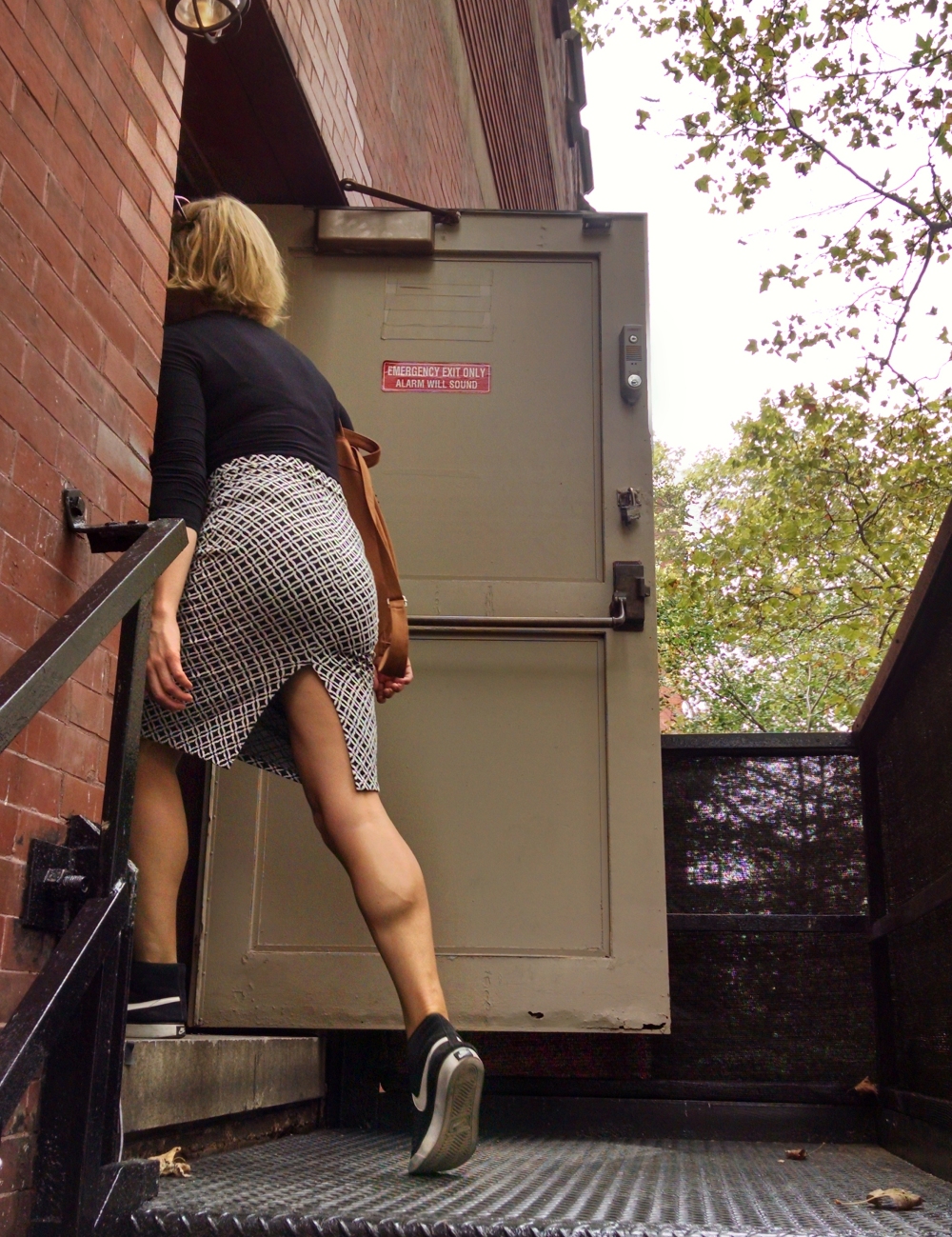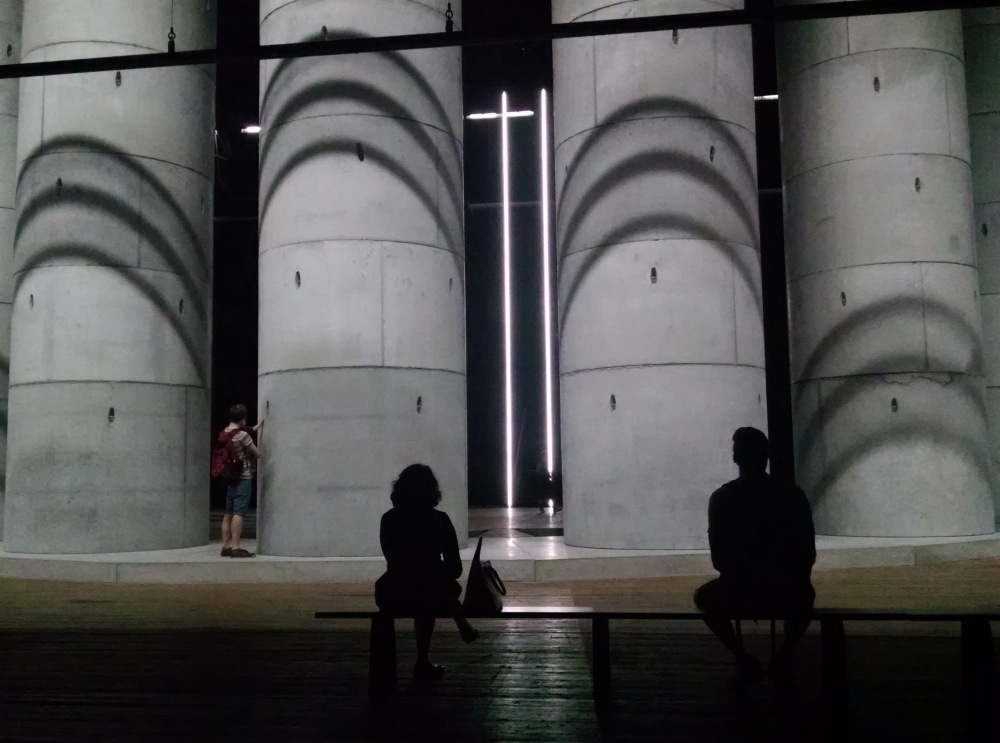Having written this post yesterday and considering last night’s events, I hesitated to post and to share it. But, it is in times like these, on days like today, that I turn to art to find humanity and the shared dream of a world where peace, love, and understanding can conquer. With that in mind, I want to share a globally-minded and thoughtful work that explores the human occupation of and with loss and mourning. With this, I will remember to continue to strive and push forward. To turn to like-minded programs, groups, and friends with support and renewed vigor. To continue fighting for equality and the world we wish to live in. This is not the end of the fight, this too shall pass. Moving forward, regardless of where you stand or who you voted for, I urge everyone to remember to be kind and to reach into the depths of their moral consciousness to treat everyone with empathy and remember that we are all human beings with feelings, dignity, and loved ones.
_________________________________________________________________

Installation view, Taryn Simon, An Occupation of Loss, Park Avenue Armory; September 13-25, 2016. Image taken by author.
In most art spaces today, be it a museum, gallery, or auction house, you walk into a square, white room. It is climate controlled, clean, and quiet. The works of art hang on the walls or sit on pedestals like fetishes and the viewer gazes upon them like sacred works that have the power to impart knowledge and culture. You are not a part of this space; you are an interloper who tries to understand.
This is not how art was always displayed and it is not how art will always be displayed. Before the mid-1900s art was hung in a manner called “salon style” where it basically wall-papered the surface from floor to ceiling. Tightly hung, the curators of Europe’s great salons would fit as much art as possible on the wall because it was meant to be viewed, judged, and sold. There was no concept of “breathing room” and an artist’s position on the wall was dictated by talent, political maneuvering, and luck. It was something to be fought over and widely discussed.
Lately, I have been seeing a shift which I have been expecting for years. Moving away from a pure viewing of art, many new exhibitions are site-specific, interactive, and visceral. In my mind, this is the future of art. It speaks to the current culture of boundless information sharing, global communication, and immediate gratification. Viewers inhabit an art space and through their actions activate it. The best versions of this utilize a space in a unique way, encourage play, and pull from both history and contemporary culture. I have recently had the pleasure of experiencing three successful iterations of the new art space: Taryn Simon’s An Occupation of Loss, Ann Hamilton’s Habitus, and Pedro Reyes’ Doomocracy. Each show tackled a different subject, a different space, and a different medium, but each successfully created an exhibition that led to a vivid experience of humans interacting with, and thus giving life to, things. People have been animating objects since the beginning of recorded history, but the interesting aspect of these shows is that they draw attention to this fact and allow an active viewing environment that is based as much on physicality as it is on intellectualism. My next three posts will be about these shows, starting with Taryn Simon’s.

Installation view, Taryn Simon, An Occupation of Loss, Park Avenue Armory, September 13-25, 2016. Image taken by author.
Taryn Simon: An Occupation of Loss. The Park Avenue Armory, New York, NY; September 13-25, 2016
You begin by being turned away from the Park Avenue entrance after purchasing your ticket. You are instead instructed to follow the building along 67th Street to the fire escape. Once there, you are presented with a long, descriptive wall text and, once you finish reading, ascend the fire escape about two stories up to a door. At first, you are blinded by the sudden darkness, all that stands out are staggered strips of blue light and then, eventually, the vista of the old drill hall occupied by eleven concrete towers, or wells, that are gently illuminated. Gathered together in the cavernous space, the monumental sculptures form a half circle, almost appearing to huddle together in the middle of the space. Next, you descend the illuminated metal staircase to the ground floor and approach the work.

Installation view, Taryn Simon, An Occupation of Loss, Park Avenue Armory; September 13-25, 2016. Image taken by author.
I did not have the opportunity to attend one of the nightly performances of professional mourners, which I hear were quite moving, but I still encountered a spectacular space. As I approached the wells with my two friends, everything was quiet and still. Other visitors seemed disinclined to speak above a whisper and the breathless air and gentle light created a calm, almost ritualistic space. We quickly commandeered one of the wells and proceeded to enliven the space. Since I was aware of the nightly performances, I was excited to test the acoustics and one of my friends, a singer and actress, was happy to help. We sang and made noise and laughed and talked. The sounds rang within our well and encouraged us, although we were slightly concerned about disturbing the other visitors. While the sound was amplified within the well, it was concentrated in our immediate space so that when one of us stood outside it, it was muffled creating a unique space where you were both a part of your immediate surroundings and separated from the greater whole. Quite like mourning, when you were in the silo you could be observed by those outside, but they could not fully comprehend what you were experiencing.
Inhabiting the well, which included a single strip of blue light that ran the entire height and a concrete bench placed about four feet above the ground and attached directly to the wall, I felt happy and safe. At one point, I crawled under the bench and crouched awkwardly like a child playing make-believe. Glad to be together and quickly feeling territorial about “our” well, we were a little disgruntled when another pair asked to join, though we couldn’t say no. As it turns out, they added to our space and a sixth member joined our group soon after. We all spoke about the show, the performances in the evening, and the physical space. The wells provided an opportunity for connecting isolations: each well created an environment that could be looked in on from the outside, vaguely heard, and joined. Eleven separate little worlds living side by side. All apparently the same but infinitely and minutely different, just like individual people. Strangers were encouraged to cohabitate a small space and share an intimate moment. As our group grew comfortable, we began to experiment within the space. We learned that the sounds rang clearly throughout the well, but outside were muffled. In the very center the frequency of the vocal noises changed. It was like being right in the middle of the sound you were making, as if suddenly the space was smaller and you were shouting in a handheld tube. I couldn’t help feeling like it was more truthful, somehow, in the center. At the very least the difference was fascinating and we shared the change with the carefree abandon of discovery. One of my friends remarked: “It is amazing that something so utilitarian seeming can inspire so much human movement and noise making.”

Installation view, Taryn Simon, An Occupation of Loss, Park Avenue Armory; September 13-25, 2016. Image taken by author.
Simon’s practice has been an exploration of intricacies, research, cataloguing, and exploration. Typically, she focuses on spaces and objects that would appear to exist on their own as independent things but are in fact created and activated by human presence. The spaces or objects act as middle men, mediating the relations between people and how they interact with and influence each other. An Occupation of Loss explores mourning. This is most clear during the evening performances where professional mourners from across the world inhabit a well and perform traditional, ritualistic mourning practices. During the day, the presence of the mourners is dropped to a murmur as their recorded sounds are faintly played in the drill hall and the silence of the uninstructed viewer prevails. Growing up with the mindset that grief and mourning are kept quiet, only feeling comfortable crying into a pillow or alone in the bathroom, and raised on scenes of private mourning, it is both alien and familiar to be confronted with a space that explores public mourning and the history of lamentations. I know the feelings, but do not know the sharing. Simon’s installation re-introduced me to the inherent humanness of mourning and loss and how it occupies us. While we occupied the space, shared with the ghosts of each night’s ritual and fellow viewers, we were made aware of the underlying similarities that connect people. No matter how foreign a ritual or space may seem, we all occupy it with the same feelings: love, sorrow, and the need to connect.
An Occupation of Loss created a space that made you uncomfortable, maybe because it was so cavernous, maybe because everyone else was being so quiet, maybe because no one was quite sure what they were supposed to be doing/seeing/feeling. Regardless, this creation made you aware of the space you were inhabiting and how you inhabit it. It made you aware of yourself and the people around you and how you interact within that space. The space, created by an artist and occupied by visitors, acts on those visitors because of the actions taken upon it by all the people who inhabited and activated it.
Right before we entered the exhibition, standing on 67th street and reading the wall text with one of the attendants, two older women forewarned us not to waste our time, that it was nothing more than concrete columns. Art of this nature, art that demands participation, some research, and curiosity will not be experienced in the same way by any two viewers. Some will not experience it at all. This is an important lesson, however: you get what you put into something and, while you cannot control the space that you inhabit, you can control how you occupy it. We chose to occupy this space of symbolic loss with human interaction and joy.

Installation view, Taryn Simon, An Occupation of Loss, Park Avenue Armory; September 13-25, 2016. Image taken by author.


Very powerful
LikeLike